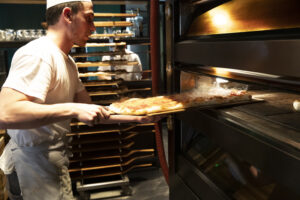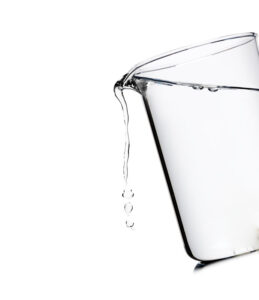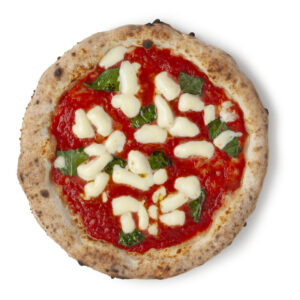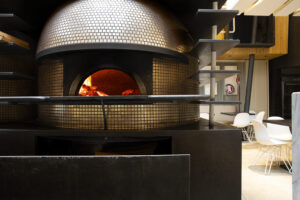Categories Pastry Chef Articles
Five experiments and curiosities about pizza that you can find at Modernist Pizza
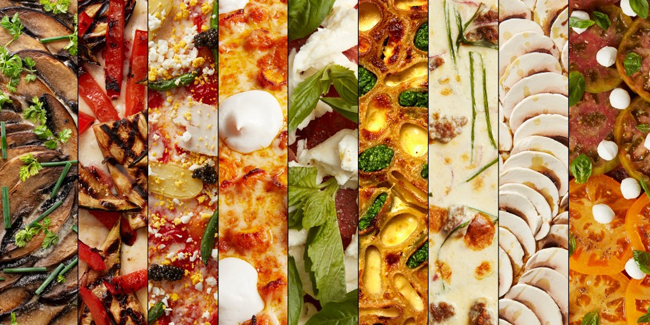
After more than four years of research, Modernist Pizza is the book where Francisco Migoya and Nathan Myhrvold share their discoveries and findings about the delicious world of pizza. Available in our online bookstore Books For Chefs, it is made up of three volumes and a cooking manual, as well as more than 1,000 traditional and avant-garde recipes for many types of pizza makers, from professionals, including chefs and bakers, to beginners.
A movie could be made about Myhrvold’s life, who has a PhD in physics and being a Microsoft technical manager for many years, he has developed hundreds of patents (more than 900) that have made him a prestigious figure in technology. Additionally, he has two other great passions, cooking and photography. For the former, he was encouraged to study at a prestigious French school in Varenne in 1999 and, coinciding with the emergence at that time of El Bulli, he felt an increasing interest not only in molecular cuisine, but in everything that scientific knowledge could feed to the creativity of chefs. Meanwhile, photography is a way to make his books more accessible to an audience not accustomed to scientific content. What prompted him to create cookbooks was basically that most of the existing ones never explained the reason for things. His scientific contribution also serves to distance itself from much of the culinary literature already written that is false or wrong, also in the world of pizza.
One of the anecdotes that Myhrvold explains is that they asked dozens of pizza experts why it was that the pizzas on the edge, or cornicioni, used to be much thicker than on the outside, when on many occasions the dough was completely flat before being cooked. No one knew how to tell them the real reason, but most alluded to the fact that it must be due to the weight generated by the ingredients placed on top. As the answer did not convince them, they tested it. To do this, they used a conventional flat dough and placed sand on top with a weight equivalent to what the ingredients of a pizza usually have. They were surprised when it came out of the oven since the dough had developed everywhere, not just at the edges. This allowed them to understand that what actually caused this effect in the oven was humidity, that is, the water contained in the ingredients, basically the sauce. Since water can never exceed 100ºC, the part of the pizza that contains the ingredients does not exceed this temperature and therefore does not develop as much. This is just one of the many interesting facts that can be found in this book.
Below, we share five experiments and curiosities about pizza, a food whose manufacturing process has been transmitted mainly orally, despite its great popularity around the world. For this reason, there are many types of pizza because they have evolved separately, especially from Italian emigrants who first settled in different parts of the world.
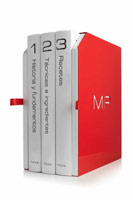
Does pizza taste better with pure water?
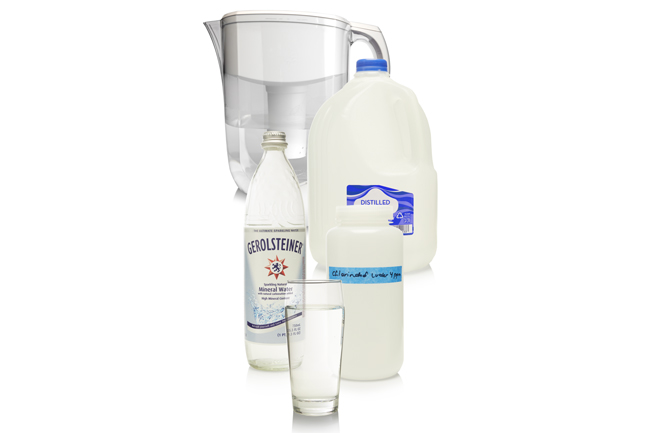
Some pizzaioli claim that the pizza tastes best when the dough is made with high-quality water—that is, filtered, distilled, or deionized—with little dissolved solids. To verify this, we use different waters in our Neapolitan, New York, artisan, highly hydrated taglio, Detroit-style, focaccia and New York square pizza base doughs (we baked more than a hundred pizzas for this experiment).
We start with tap water, the most common in almost all pizzerias. In general, this water has low concentrations of chlorine and fluoride, antimicrobials that could theoretically slow down the growth of yeast and lactic acid bacteria. On the other hand, dissolved chlorine and fluoride evaporate rapidly on contact with air, so after kneading the preferment, there may be very little left to affect microbes. In addition, since pizzaioli use tap water, the most common strains of microbes in sourdoughs and commercial yeasts have been selected to tolerate these additives.
Along with tap water, we use distilled water, filtered water, and hard mineral water (Gerolsteiner brand) with a total dissolved solids content of 2488 parts per million (ppm). To validate our hypothesis that chlorine in tap water does not harm the dough, we also chlorinate deionized water up to the legal maximum limit (4 ppm) and use it to make pizza.
The final results matched a similar experiment conducted at Modernist Bread: We prefer tap water to other types of water. We only found subtle differences in all cases in terms of flavor and volume, which allows us to conclude that the type of water does not make the pizza taste better. Unless your water supply has a foul odor or some contaminant, filtered or distilled water is not worth buying. The only exception was that, compared to the other waters, hard mineral water consistently produced less volume in the bread-like pizzas, as well as a denser crumb.
Pizzas made with water with the upper limit of chlorine (which is expected to kill yeast) did not show any disparity in dough behavior. So even if chlorinated water will kill yeast cells, it’s not enough to make a difference. Chlorinating agents disappear after cooking, as they decompose in the oven. We found it interesting that the Neapolitan pizza with chlorinated water had excellent volume and ‘leopard spots’, as well as being crispier than traditional Neapolitan pizzas.
“The kind of water doesn’t make the pizza taste better. Unless your water supply has a foul odor or some contaminant, filtered or distilled water is not worth buying.”
How to prevent the appearance of black spots on pizza
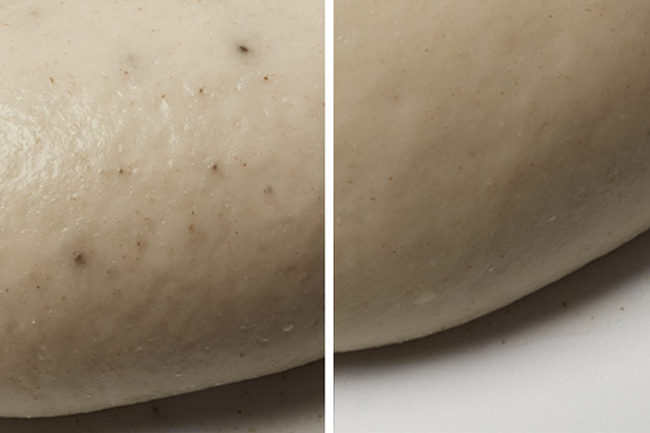
When the dough is in direct contact with air for a significant period of time, as in the case of cold-proven dough, the bran present in the flour oxidizes and turns darker. After several days, black spots appear, giving the dough a grainy appearance. This is not to say that it is spoiled (it can be baked and eaten without problems), and although they do disappear after baking, we wanted to see if we could prevent them from forming.
A simple solution was to add a small amount of ascorbic acid to the dough (0.1%), which allowed us to keep it for 5-7 days without detecting black spots. Since the formation of these spots in refrigerated dough is associated with the oxidation of bran polyphenols, it is easy to understand the role of ascorbic acid, which is an antioxidant. The drawback, however, is that the dough is tighter. To avoid this, we recommend using a bit of dough relaxer.
Another way to fix this problem is to increase the amount of yeast. When baker’s yeast, specifically instant dry yeast, is added, a lot of monomeric glutathione is added to the dough. Since yeast is metabolically a scavenger of oxygen molecules, both factors counteract oxidation during refrigerated storage. In other words, increasing yeast reduces black spots in dough by metabolizing oxygen and producing a more anaerobic environment within. With more yeast, more carbon dioxide is generated, thus reducing the oxidation effect responsible for the appearance of black spots.
When comparing the cold-proven dough with 0.25% yeast to the base dough with 0.04% yeast, only black spots are observed in the latter, as the additional yeast removes oxygen that would otherwise be available for oxidative changes. The mottling is different for each amount of yeast, and doughs with more yeast generally look better than those with less. If the aesthetics of the dough is not relevant to you, our advice is to bake the dough even if it has black spots. If the appearance of the dough is a key element for your business, add ascorbic acid (along with a dough relaxer) or a higher percentage of yeast.
“If the appearance of the dough is a key element for the business, add ascorbic acid (along with a dough relaxer) or a higher percentage of yeast”
The Franken-cheese. How to turn blue, goat, or Parmesan cheese into a pizza cheese
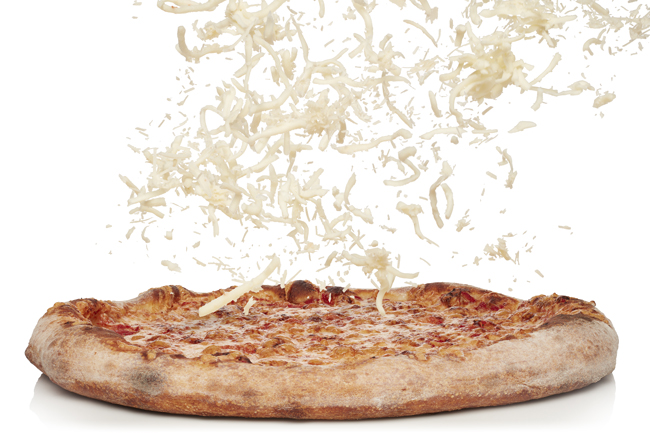
Cheese can have many shapes, textures, colors, and flavors. Some melt very well and sear as the pizza cooks, others don’t melt or when they do, the fat separates. For cheese to melt well, it needs to have the right combination of moisture, fat, and acidity. If it does not meet these requirements, it will have to be put on the pizza after it is baked.
We wondered if we could manipulate these complementary cheeses using modern techniques and devices to come up with a protocol that would improve their melting qualities. Could we get certain cheeses to melt as well as mozzarella? We were hoping to be flexible enough to be able to add them at any time during the bake.
To do this, we try to pair the cheeses that do not usually melt well with others that do, in the hope of achieving the flavor of the former and the elasticity and texture of the latter. We tried various cheese blends, which we affectionately call franken-cheeses. Our first impulse was to start with the only cheese we know melts well on pizza: low-moisture mozzarella (or pizza cheese). We then identified the complementary cheese categories and chose a representative from each. We select very hard cheeses, blue cheeses, washed-rind cheeses, and acid-coagulated cheeses: specifically, Parmesan, blue cheese, brie, and fresh goat cheese.
Judging from the success of the technique we used in our modernist cheese sauce recipe, which we updated from Modernist Cuisine at Home, we knew that emulsifiers or melting salts help cheeses blend together. After several trials (and failures) with different cheeses and emulsifiers, we found that some blended best with 0.5% sodium hexametaphosphate, while others did best with 2% mono-diglyceride flakes and water.
In addition to deciding on an emulsifier, we had to figure out the optimal ratio of pizza cheese to the cheese we wanted to mix it with. Each case was different: medium-flavored cheeses, such as brie or taleggio, required a greater amount of cheese, while in the case of blue cheese, 20% was sufficient. In the end, we found that the flavor of the washed rind cheeses was lost when paired with the mozzarella. Some cheeses we were able to successfully bake at different temperatures. We were able to bake the goat cheese-based franken-cheese in both a 454°C / 850°F gas pizza oven and a 315°C / 600°F oven. The benefits are clear (and it can be made with just a few ingredients) and it represents a breakthrough in the way different pizza cheeses can be handled to preserve flavor and achieve the ideal quality of the must-have pizza cheese.
“For cheese to melt well, it needs to have the right combination of moisture, fat, and acidity. If it does not meet these requirements, it will have to be put on the pizza after it is baked.”
Why do wood-fired ovens need great skill?
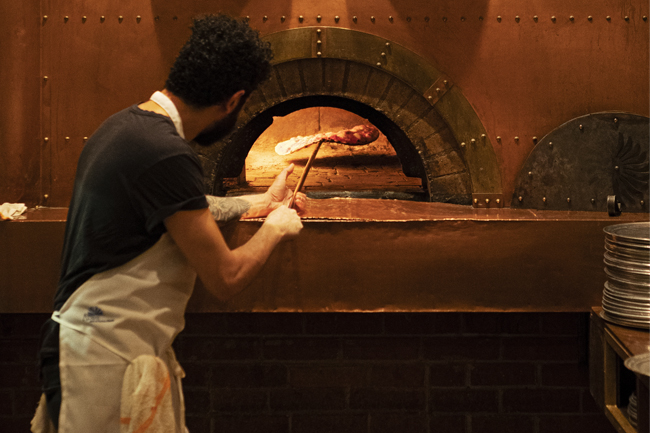
In recent decades, wood-fired ovens have become commonplace in pizzerias and are seen as a return to tradition and artisan quality (although some of this nostalgia is unwarranted). It is thought that, since using a wood-fired oven is a challenge, pizza makers will know how to make quality pizzas. But there are many owners of this type of ovens who do not know how to use them. It is also unclear how traditional they were even in Italy, where many are now made and exported to the United States due to the popularity of Neapolitan honeycomb pizzas.
In terms of quality, magnificent pizzas can be made in these ovens (we tasted delicious pizzas all over Italy), but they require a lot of preheating time, a lot of attention and very regular maintenance. Some wood-fired pizza ovens reach temperatures of up to 600°C / 1100°F, capable of burning any food in seconds.
The temperature we use to bake a pizza is 455-480°C / 850-900°F. However, maintaining a constant heat in these ovens is very difficult (they are one of the least reliable at maintaining a constant temperature). We asked the pizzaioli at all the wood-fuelled pizzerias we visited what temperature they bake their pizzas at. Their answer never matched the actual oven temperature. You also need to keep a close eye on when to refuel; Furthermore, using inadequate or not very dry wood can cause many problems.
To use these ovens to cook a pizza, you must control the times to the second, be very familiar with the oven and have great skill with the handling of the shovel. Its defenders would have us believe that it is like learning to ride a bicycle, but it is not the same. It is difficult, although everything starts going smoothly once you begin. We think it’s more like riding a unicycle: it’s always hard and there are better options. If you do not have the knowledge to use this type of oven, we recommend using a pizza oven. The particularities of wood-fired ovens can make it difficult to obtain reproducible results, a drawback that businesses must weigh against the marketing advantages of traditional appeal. There are some styles of pizza, such as those that are baked on a tray, for which we do not recommend wood-fired ovens, since there is only space for a couple of trays and it is difficult to turn them quickly.
The comfort and cleanliness of gas ovens may lead you to wonder if wood is only used for its historical value and if it is due to marketing ploys. In the mid-1990s, the AVPN established wood-fired pizza ovens as the only traditional option. Both in the world of pizza and among the general public, there was talk of pizza ≪in a wood-fired oven≫. There is also a myth that wood flavors pizza. However, it might be a good thing for pizza businesses to consider investing in a gas oven.
“You can make magnificent pizzas in these ovens but they require a lot of preheating time, a lot of attention and very regular maintenance”
Detroit-Style Pizza Peculiarities
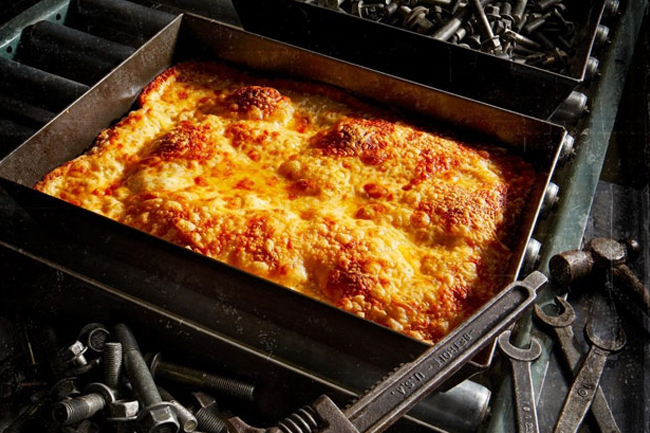
In 1972, Little Caesars founder and Detroit native Mike Ilitch made a prediction: “In the next four or five years, we’ll see square and deep-pan pizza replace round.” Ilitch was wrong by a few decades, but Detroit-style pizza is catching on. Part of the credit goes to the late Shawn Randazzo, named World Pizza Champion of the Year at the 2012 International Pizza Expo.
Before Randazzo’s victory, Detroit-style pizza was confined to this city. But little by little, more pizzerias serving this style are popping up outside of Motor City, like Emmy Squared in Brooklyn, Paulie Gee’s Logan Square in Chicago, and Apollonia’s Pizzeria in Los Angeles. From Randazzo and other key aficionados, his lineage can be traced back to the creator of the style, Gus Guerra. In the 1940s, Guerra was looking to increase the profits of his bar, Buddy’s Rendezvous, and it was his mother-in-law, of Sicilian origin, who taught him how to make his homemade pan pizza.
- Detroit-style pizza is closely associated with the American automobile industry, which is based in and around the Motor City. The dough is pressed into a deep, rectangular blue steel tray that we were told was originally used to hold small parts in car factories in the days of Gus Guerra. At first we wondered if it was a legend, but we found old photographs of auto workers using these trays.
- The key is in the cheese. Many Detroit-style pizzas are made with Wisconsin cheese, which is added in generous amounts. The cheese caramelizes on the edges of the tray, forming a frico crown.
- The sauce is applied after cooking, which helps prevent gel coating.
- Since this pizza is more like bread, most of the pizzerias here use a normal gas oven. A tunnel oven also works well for this style of pizza.
“The dough is pressed into a deep, rectangular blue steel tray which, we were told, was originally used to hold small parts in car factories.”

